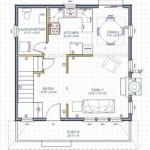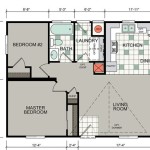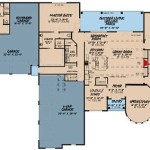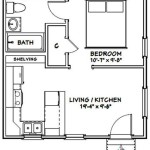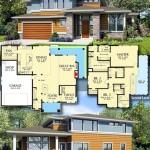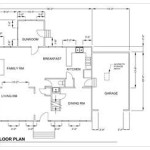Layout Plan of a House: A Comprehensive Guide
A house plan is a crucial blueprint that guides the construction and design of a home. It outlines the spatial arrangement, flow, and aesthetic details of the interior and exterior of the house. Understanding the elements of a house plan is essential for homeowners, architects, and builders to create functional, comfortable, and aesthetically pleasing living spaces.
1. Floor Plan
The floor plan is the most important component of a house plan. It shows the arrangement and dimensions of rooms, walls, doors, windows, and other structural elements on each level of the house. Floor plans provide a bird's-eye view of the layout, allowing for efficient space planning and traffic flow.
2. Site Plan
A site plan depicts the house's position on the property, including its orientation to the sun, surrounding structures, driveways, walkways, patios, and landscaping. Site plans ensure compliance with building codes, provide access to utilities, and optimize natural light and airflow.
3. Foundation Plan
The foundation plan shows the type and layout of the foundation, which supports the entire structure of the house. It specifies the materials, dimensions, and details of the foundation, such as concrete footings, beams, and walls.
4. Framing Plan
The framing plan illustrates the structural framework of the house, including the layout of walls, floors, ceilings, and roof. It provides details about the materials, sizes, and connections of the framing members, ensuring structural integrity and compliance with building regulations.
5. Elevation Plan
Elevation plans show the external appearance of the house from different sides (front, back, and sides). They depict the shape, size, and style of the house, including windows, doors, trim, and architectural details. Elevation plans are crucial for creating aesthetic consistency and curb appeal.
6. Section Plan
Section plans provide a vertical cross-section of the house, showing the relationship between different levels and spaces. They illustrate the height of walls, ceilings, and floors, as well as the location of stairs, fireplaces, and other vertical elements.
7. Electrical Plan
Electrical plans indicate the location of electrical outlets, switches, fixtures, and wiring throughout the house. They ensure proper lighting, power distribution, and safety by following electrical codes and regulations.
8. Plumbing Plan
Plumbing plans outline the location of water supply and drainage systems, including sinks, toilets, showers, and pipes. They specify the size, materials, and connections of plumbing fixtures and pipes to ensure adequate water flow, drainage, and sanitation.
9. HVAC Plan (Heating, Ventilation, and Air Conditioning)
HVAC plans show the location and design of heating, ventilation, and cooling systems. They indicate the type, capacity, and placement of furnaces, air conditioners, vents, and ducts, ensuring comfortable indoor temperatures and air quality.
10. Landscape Plan
Landscape plans depict the design and layout of outdoor spaces, such as gardens, patios, walkways, and fences. They enhance the aesthetics and functionality of the property by integrating natural elements and providing outdoor living areas.
Conclusion
House plans are indispensable tools that guide the construction and design of homes. They provide a comprehensive representation of the spatial arrangement, structural elements, and aesthetic details of a house. By understanding the different components of a house plan, homeowners, architects, and builders can create functional, comfortable, and visually appealing living spaces that meet their needs and desires.

Design Your Own House Floor Plans Roomsketcher

Create Professional 2d And 3d Floor Plans

Small House Designs Shd 2024001 Pinoy Eplans

Design Your Own House Floor Plans Roomsketcher

Design Your Own House Floor Plans Roomsketcher

How To Draw A Floor Plan Live Home 3d

How To Read Floor Plans 8 Key Elements A Plan Foyr

Heritage House Plan

House Plans Floor Easy Search Form

Importance Of House Floor Plans In Architectural Design

